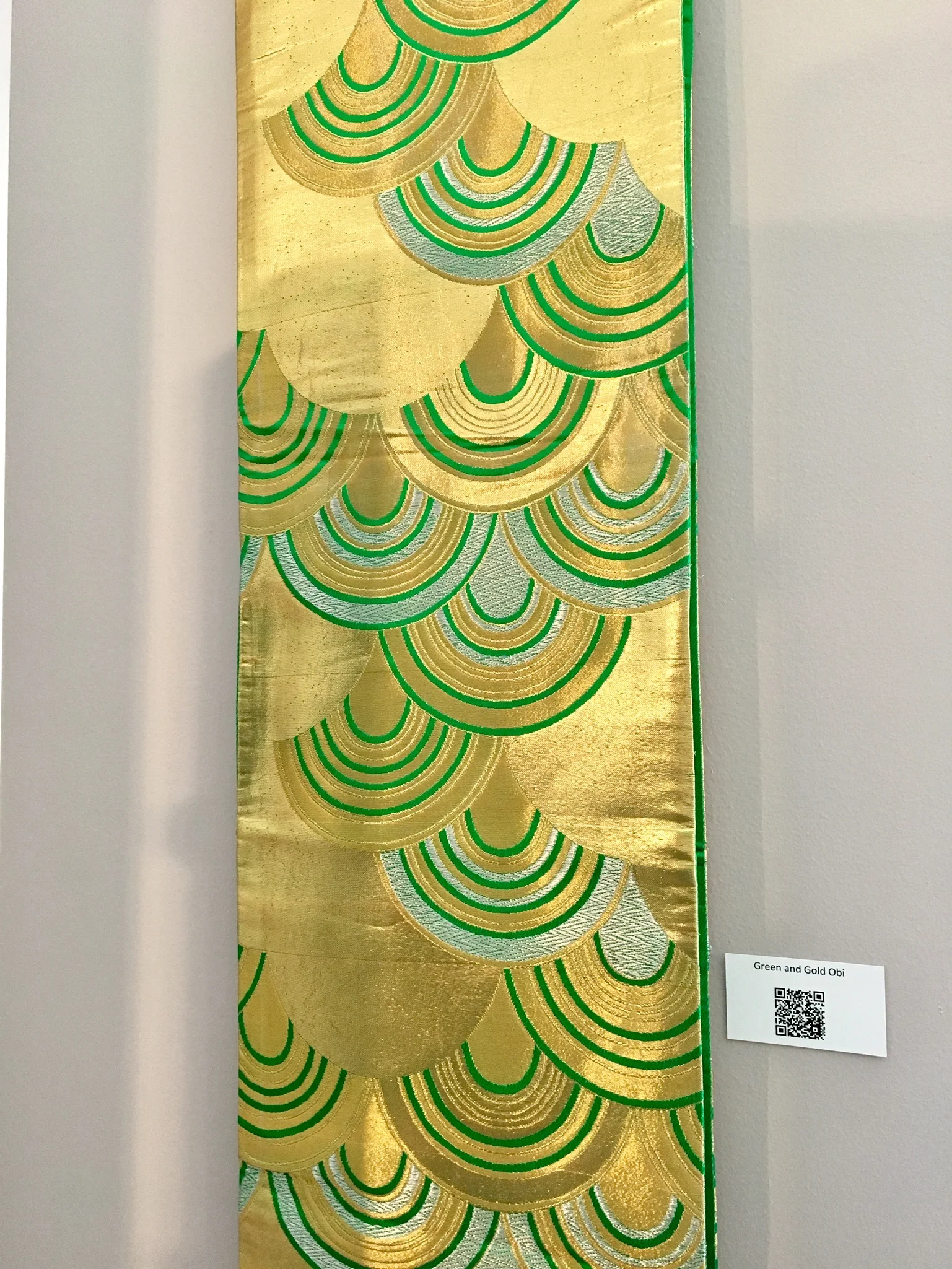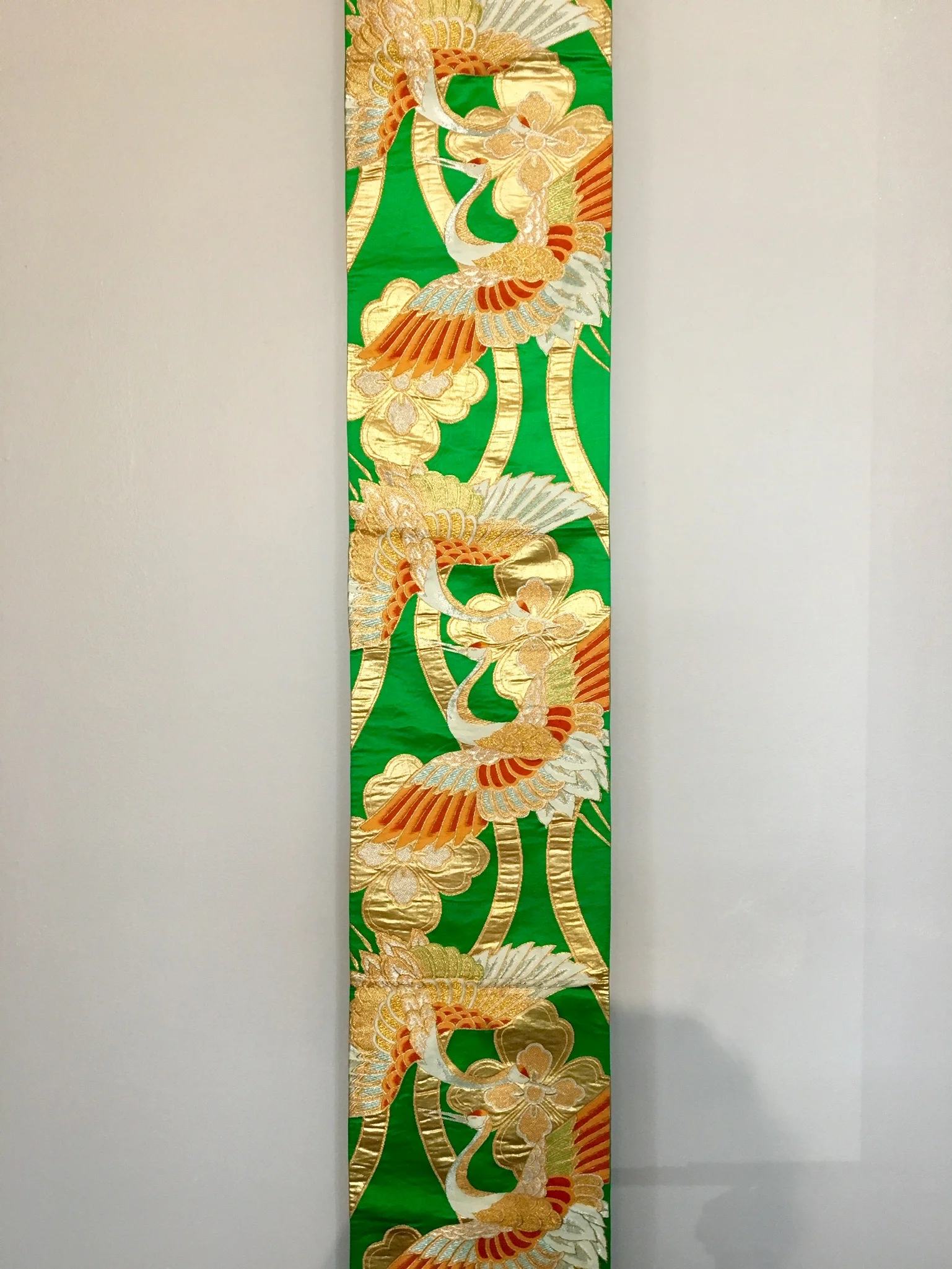Nagoya Obi with Ebi (海老)
Nagoya Obi with Ebi (海老)
Silk Obi with Ebi (海老) in Rough Woven Silk
The wavy, but lustrous canvas provided by the Hige-Tsumugi (紬) silk is an ideal highlight the elegant brush painting of the prawn motif.
Tsumugi (紬)is wild silk, which has a textured surface and hige-tsumugi (hige means beard, in Japanese) has a sort of hairy texture to the surface, popular in Japan, with a surface texture of little loose threads. Tsumugi Silk is especially costly, as it is wild silk, made from cocoons where the silk moth has cut its way out, leaving a hole in the cocoon, so that, when spun, it has to be frequently joined by hand, which gives the thread the an unevenness that provides the texture when woven. This makes it difficult and time consuming to spin the silk, which makes it incredibly expensive fabric.
Seasonal Association Winter
When To Wear It: all year
Auspicious: yes
History: Ebi can play two different roles as a motif, that of a seasonal motif, and that of an auspicious motif.
Seasonal: Ebi is a staple ingredient in Osechi, the traditional New Year’s selection of food.
Auspicious: The hunched back and whiskers of the ebi are features that are also attributed to an old man and because of this, ebi is considered a symbol of long life. It is often nicknamed the old man of the sea. Ebi can also be referred to as Ise Ebi (伊勢海老) which is a particular species of spiny lobster found in Mie prefecture.
Identification: Ebi will resemble a lobster or a shrimp with a curved back, long whiskers on its face, and six legs.
Size:
Width: 31cm 12 1/4" at the widest part, tapering to 6" (15.5cm)x 94 1/2" (240cm)
Length: 355cm 139 3/4"
Overall Condition: 9 out of 10
This is an antique piece, carefully conserved. Despite its age, the fabric is strong, and suitable for wearing. When worn, all surfaces exposed are clean and free of discoloration.
Ebi, 海老 , shrimp, lobster, or other long-tailed crustacean
The wavy, but lustrous canvas provided by the rustic silk is an ideal highlight the elegant brush painting of the prawn motif. Prawns (ebi) might seem like an odd thing to put on a kimono or obi, but it's actually considered an auspicious motif! As well, as an island nation, Japan relies heavily on the sea to provide food and resources.
Prawns are typically served as part of a New Year's meal, so they are heavily associated with winter. However, this motif can also be auspicious and be worn year-round, as their long antenna and "hunched over" appearance resemble an old man, therefore implying long life.
Hige-Tsumugi Silk
Tsumugi is wild silk, which has a textured surface and hige-tsumugi (hige means beard, in Japanese) has a sort of hairy texture to the surface, popular in Japan, with a surface texture of little loose threads. Tsumugi silk is especially costly, as it is wild silk, made from cocoons where the silk moth has cut its way out, leaving a hole in the cocoon, so that, when spun, it has to be frequently joined by hand, which gives the thread the an unevenness that provides the texture when woven. This makes it difficult and time consuming to spin the silk, which makes it incredibly expensive fabric.














